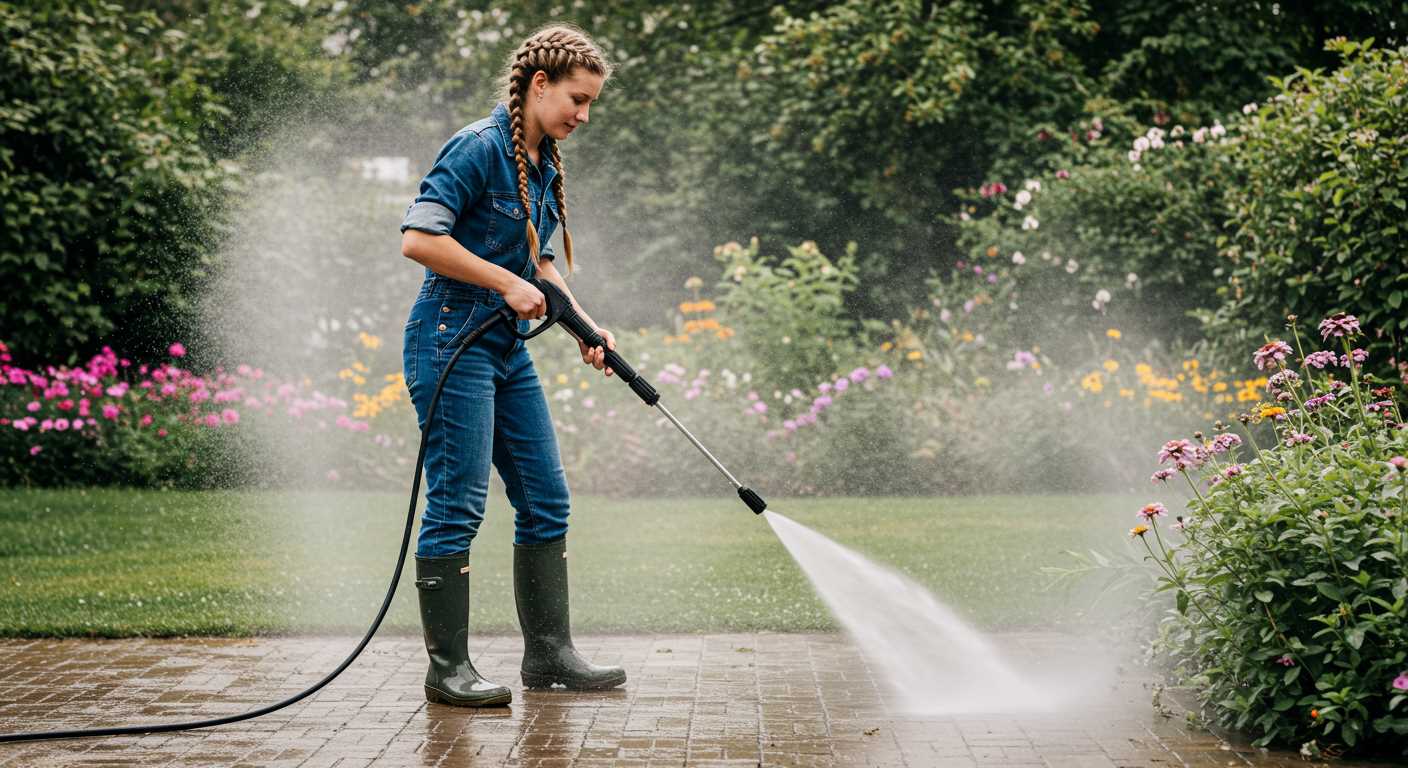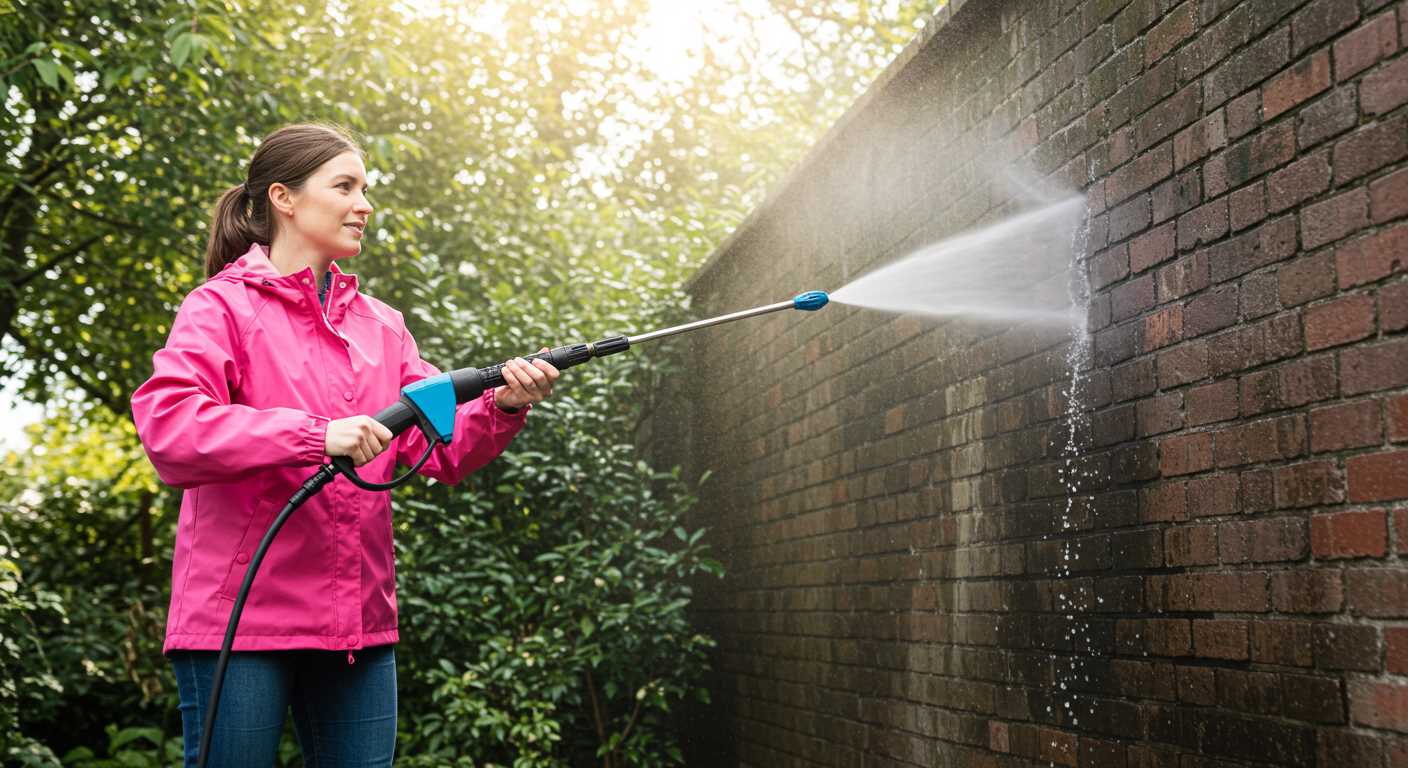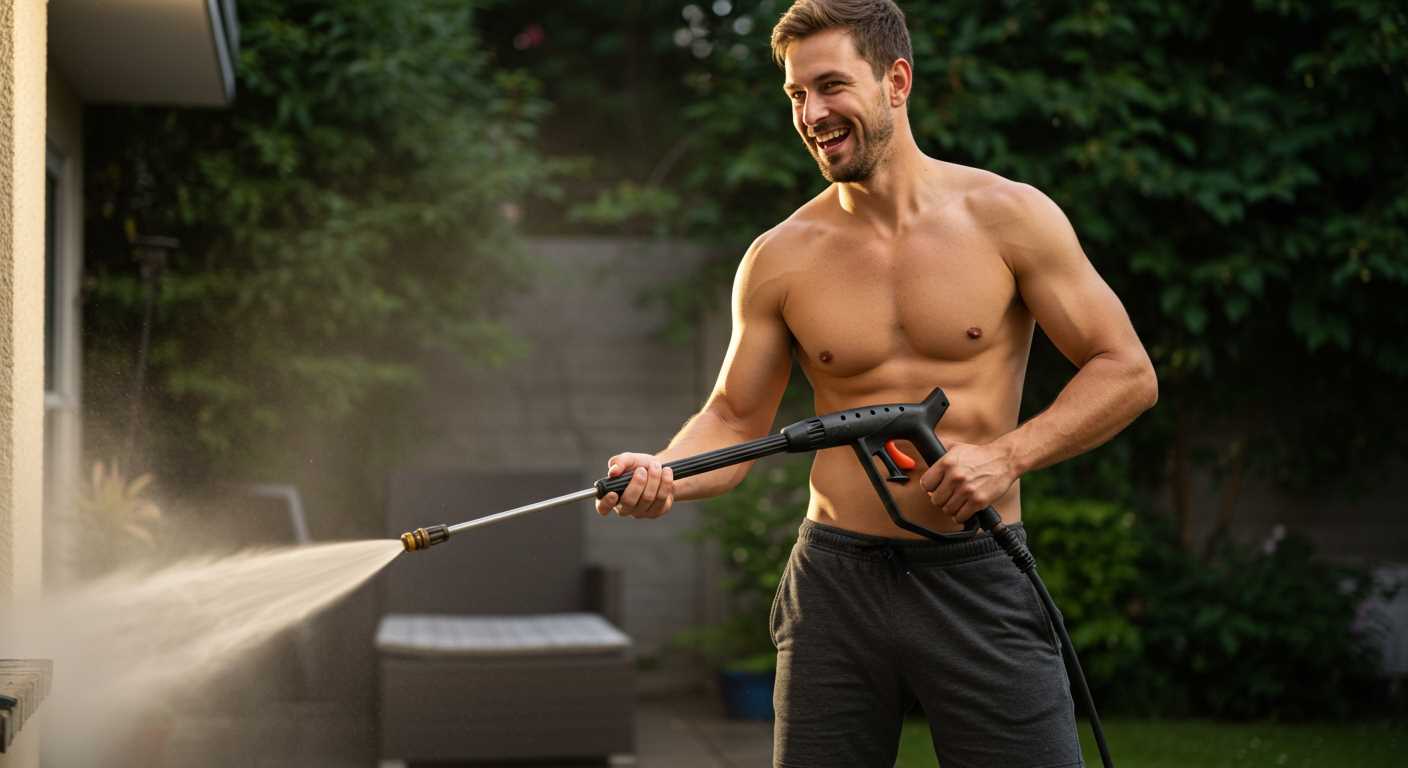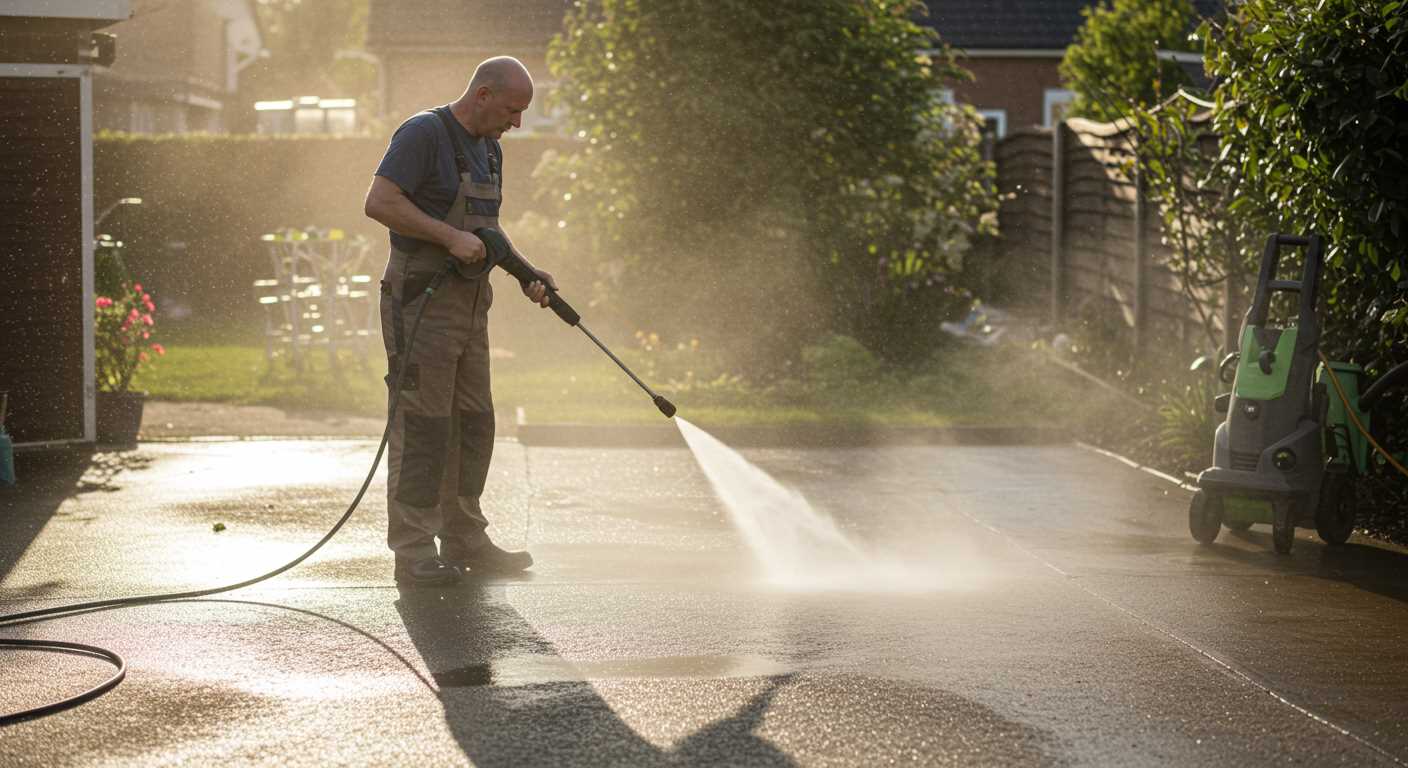



The average price for a standard cleaning device suitable for home use ranges from £100 to £400, depending on features and specifications. For light tasks like cleaning patios or vehicles, a model priced at around £150 to £200 typically suffices. Brands such as Kärcher and Nilfisk frequently offer reliable options within this price bracket.
If tackling larger projects or more stubborn grime, investing in a more robust unit, potentially in the £300 to £400 range, is advisable. These models often come equipped with higher pressure capabilities and enhanced durability, catering to professional-grade cleaning tasks. Consideration of additional features like adjustable nozzles and hose lengths can further influence pricing. Opting for a unit that balances cost and functionality is key for long-term satisfaction.
Additionally, don’t overlook the potential benefits of considering second-hand models or seasonal discounts. Refurbished units can provide significant savings while still offering reliable performance. Always compare warranties and customer service options across brands, as these factors can impact overall value.
Investment in a High-Quality Cleaning Machine
For a reliable cleaning machine, I recommend preparing a budget between £120 and £400. This range allows for a balance of quality and performance, suiting various cleaning needs.
Here’s a concise breakdown of the average costs based on types of models:
| Type | Price Range (£) | Features |
|---|---|---|
| Electric | 120 – 300 | Lightweight, ideal for small tasks, easy to store. |
| Gas | 250 – 500 | Powerful, suitable for heavy-duty jobs, portable. |
| Commercial | 400 – 1000 | Durable, designed for frequent use, high performance. |
Consider additional expenses such as accessories, detergent, and maintenance items. Budgeting an extra £50 to £100 for these can enhance your usage experience.
Prioritising brands with good warranties can save you from future costs. Look for products with at least a 2-year warranty to ensure reliability over time.
Understanding Pressure Washer Types and Their Prices
Electric units typically range from £100 to £300. Ideal for light to medium tasks like cleaning driveways or decks, they are user-friendly and easy to maintain.
Gas-Driven Options
For more demanding projects, gas machines priced between £300 and £600 deliver higher pressure and water flow rates. They’re suitable for commercial use and tough jobs such as stripping paint or deep cleaning brick surfaces.
Hot Water Systems
Hot water variants, which can start at around £500 and exceed £1,500, are particularly effective for oil and grease removal. They are commonly used in professional environments, such as car washes or industrial applications.
Choosing the right type is paramount. Consider your specific needs and frequency of use to find the right match within your budget.
Factors Influencing the Cost of Pressure Washing Equipment
Brand reputation plays a significant role in pricing. Established names often command higher prices due to proven reliability and customer service. When considering a model, research its track record for durability and performance.
Engine type is another critical element. Gas-powered units tend to be pricier than electric versions due to greater power and mobility. However, they may incur higher ongoing maintenance costs. Evaluate your intended usage to determine which engine suits your needs.
The flow rate, measured in litres per minute (LPM), affects cleaning efficiency. Higher flow rates generally imply faster cleans but can also elevate costs. Balance your budget against the necessary cleaning speed for your tasks.
Pressure ratings, measured in pounds per square inch (PSI), correlate with cleaning power. Higher PSIs provide more potential for tough jobs but may lead to increased prices. Assess the level of grime you’ll encounter to select an appropriate rating without overspending.
Accessory availability influences long-term savings. Models with more attachments or compatible tools can provide versatility, justifying a higher initial investment. Check what accessories are offered, as this may enhance usability.
Build quality is paramount. Sturdier materials usually increase durability and performance, leading to higher costs. Investigate warranty options, as a longer warranty can indicate confidence in the product’s longevity.
Market demand can fluctuate with seasons, affecting prices. Prices may spike in spring as people prepare for outdoor cleaning. Timing your purchase can save significant amounts. Seek sales or promotions leading into peak season.
Lastly, additional features, such as automatic shut-off or adjustable nozzles, can raise prices but also improve convenience and efficiency. Assess whether these extras are necessary for your cleaning tasks, ensuring you invest wisely.
Budgeting for Additional Accessories and Maintenance
The total expenditure extends beyond just the main unit. Planning for supplementary equipment and upkeep is fundamental for optimal performance and longevity.
Investing in additional items can enhance the functionality of the machine. Here are some common accessories you may want to consider:
| Accessory | Estimated Cost (£) | Purpose |
|---|---|---|
| Surface Cleaner | 50 – 150 | Efficiently cleans large flat surfaces like patios and driveways. |
| Extension Wands | 20 – 60 | Reach high areas without needing a ladder. |
| Turbo Nozzles | 30 – 80 | Increases cleaning power for tough stains. |
| Detergent Applicators | 15 – 50 | Apply cleaning solutions effectively for better results. |
| Protective Gear | 20 – 100 | Ensures safety while operating the machine. |
Routine maintenance contributes to the longevity of the unit and can include:
- Regularly checking and replacing the oil (if applicable): £10 – £20 per change.
- Cleaning or replacing filters: £5 – £25 based on model.
- Inspecting hoses for leaks and wear: £10 – £50 for replacements.
Overall, budgeting for these additions can range from £150 to £400 depending on the choices made. Allocating funds for both accessories and maintenance is key to maximising utility and lifespan of the investment.
Where to Purchase High-Pressure Cleaners: Retail vs Online
For optimal selection and pricing, I recommend exploring both retail outlets and online platforms. Each option presents unique advantages catering to different preferences.
Retail Outlets
Physical stores allow for immediate examination of the equipment. Here are some key points:
- Hands-On Experience: You can directly assess the build quality, feel the weight, and gauge ease of use.
- Instant Availability: Walk out with the item you choose, avoiding any shipping delays.
- Sales Assistance: Knowledgeable staff can provide insights and recommendations based on your needs.
- Local Deals: Sometimes, retailers offer exclusive in-store promotions that might not be found online.
Online Platforms
Shopping online opens up a broader range of choices and potential savings. Consider these benefits:
- Wider Selection: Access to numerous brands and models not always available locally.
- Comparative Shopping: Easily compare specifications, features, and prices across multiple websites.
- Customer Reviews: Insightful feedback from other users can help in making an informed decision.
- Convenience: Shop from the comfort of your home, often available 24/7.
Regardless of the option chosen, ensure to verify seller credibility, warranty details, and return policies to ensure a satisfactory purchase experience.
Comparing New vs Used Pressure Cleaners

Opting for either a brand new or second-hand cleaner involves specific pros and cons that can significantly affect your decision.
Advantages of New Equipment

- Warranty: New models typically come with comprehensive warranties that offer peace of mind against defects.
- Latest Technology: Modern devices feature advancements in efficiency, safety, and ease of use, making them more user-friendly.
- Condition: Purchasing new ensures that the unit is in pristine condition, lacking wear and tear.
Benefits of Pre-Owned Models
.jpg)
- Cost: Used cleaners are generally more affordable, allowing you to save a significant amount.
- Depreciation: These units lose value quickly; buying used means you could acquire a high-quality brand for less.
- Availability: Older models often come with their own set of characteristics, appealing to some users looking for specific features.
When I worked in the industry, I encountered many customers who opted for second-hand options, often satisfied with their choices after careful inspection. However, it’s critical to verify the unit’s history, looking for any signs of extensive wear and potential issues. I recommend testing it prior to purchase, if possible, to ensure it’s in good working order.
Ultimately, your choice should align with your specific needs and budget. If you plan to use the cleaner frequently and require reliability, investing in a new model might be more suitable. For occasional use, a used device can deliver quality results without the hefty price tag.
Estimating Long-Term Costs of Ownership
To accurately evaluate the long-term financial implications of owning a cleaning device, consider not only the initial acquisition cost but also the expenses incurred over time. Maintenance plays a significant role in longevity; regular checks on hoses and nozzles can prevent costly repairs. Allocate around 5-10% of the purchase price annually for maintenance activities, including oil changes and filter replacements.
The energy consumption of the unit will also impact overall costs. For electric models, assess the wattage and calculate potential yearly electricity bills. Gasoline-operated versions tend to require more fuel, so consider fuel efficiency and the projected usage frequency.
Consumables like detergent or specific cleaning agents should not be overlooked in your budget. Set aside funds for these items, which can vary significantly based on the cleaning tasks at hand. Depending on your usage, these additional costs could add £50 to £150 a year.
In addition to routine costs, factor in potential repairs or replacements. A warranty might cover some issues, but ensure it aligns with your expected usage. It’s wise to budget an emergency fund for unforeseen breakdowns, which could range from £100 to £300 annually, depending on usage levels and the brand.
Ultimately, by factoring these ongoing expenses alongside the purchase price, you can gain a clearer picture of what it truly means to own and operate this equipment in the long term. This will help you make an informed decision that aligns with your cleaning needs and financial considerations.
Tips for Finding Discounts and Promotions

Regularly check seasonal sales, particularly during major holidays and end-of-season events when retailers often mark down items significantly. Take note of Black Friday, Labour Day, and clearance sales, as these periods can yield substantial savings on cleaning units.
Sign Up for Newsletters
Subscribe to newsletters from your preferred retailers and manufacturers. They frequently share exclusive offers and early notifications of upcoming sales. A well-timed coupon can lead to unexpected savings on your next purchase.
Utilise Cashback Offers

Take advantage of cashback websites or credit card rewards programmes. By using these services, you can recover a percentage of your expenditure, making your acquisition less burdensome on your wallet. Ensure you compare various platforms for the best returns.
Explore social media pages of brands and retailers, as they may post limited-time promotions or discount codes, especially for followers. Engaging with content can sometimes lead to unexpected giveaways or contests.
Consider timing your purchase strategically. December and January often have markdowns, as retailers aim to clear stock. Being patient could mean significant savings.
Check local classified ads or community marketplaces for second-hand units. Many people sell barely-used equipment at reduced prices. This route may entail some negotiation but can result in great finds.









